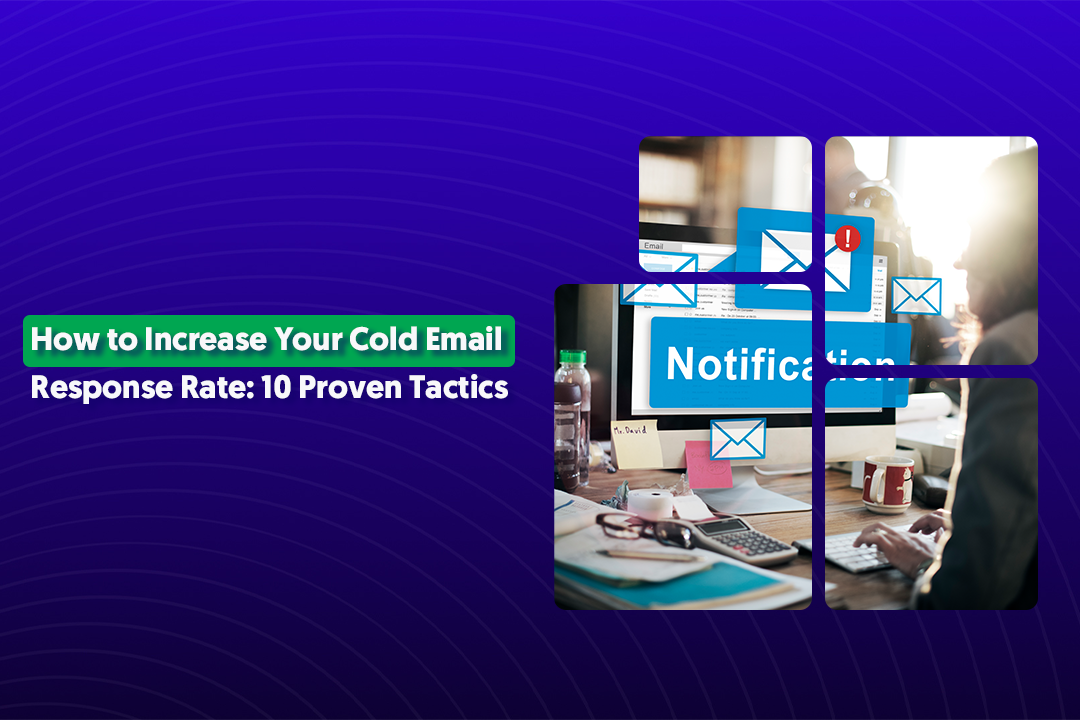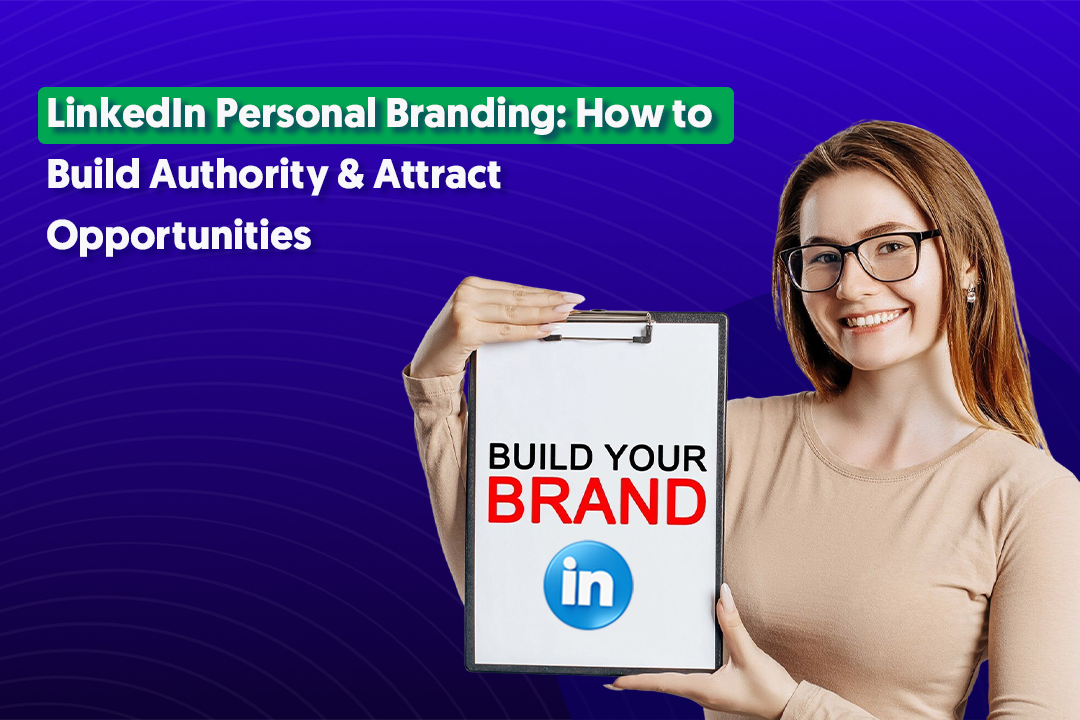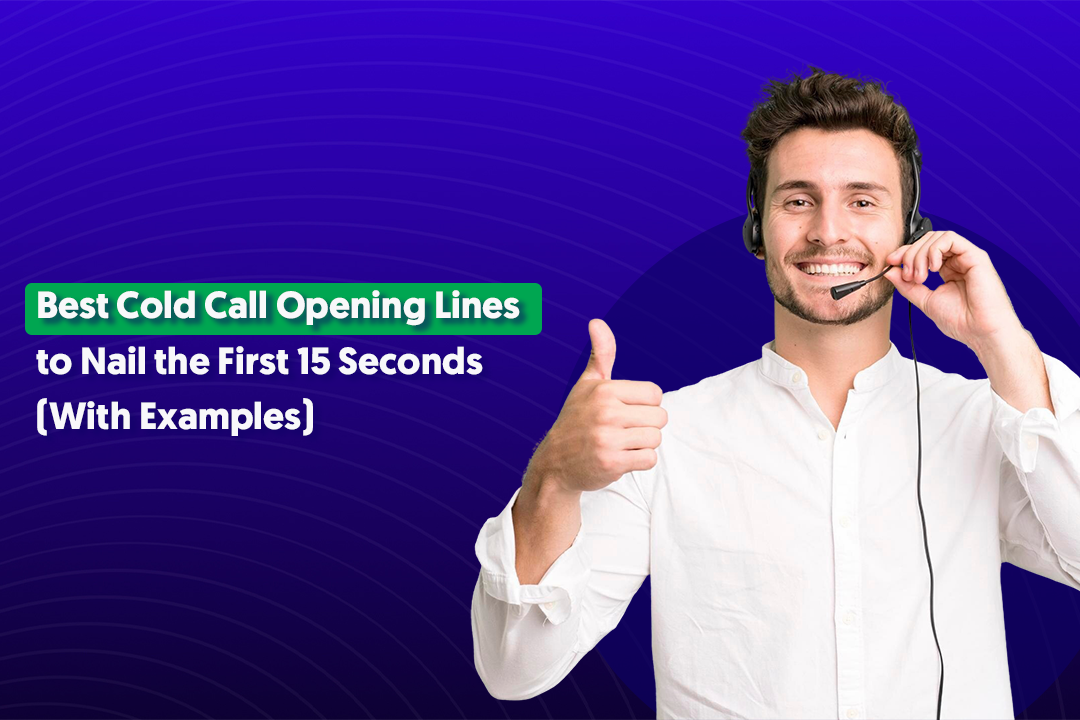Table of Content
Key Takeaways
- LinkedIn messaging is built on psychology. Trust, attention, and relevance determine whether your message gets read or ignored.
- Personalization and clarity are non-negotiable. Generic or jargon-filled messages quickly get filtered out.
- Psychological triggers like reciprocity, social proof, and curiosity significantly boost reply rates.
- A great LinkedIn message structure includes a personal hook, relevant context, a value offer, and a soft CTA.
- Avoid common mistakes like automated blasts, salesy intros, or cold calendar links. They hurt more than help.
- Thoughtful LinkedIn messaging powers lead generation better than cold email, thanks to built-in trust signals and visibility.
LinkedIn messaging is more than just a way to say hello, it’s a powerful tool for building connections, generating leads, and starting meaningful business conversations.
Whether you’re crafting a LinkedIn connection request, sending a cold LinkedIn message, or using InMail on LinkedIn, the psychology behind your words plays a huge role in whether you get ignored or earn a reply.
In this blog, we’ll explore what makes a LinkedIn message truly stand out, from psychological triggers to high-performing message structures.
Why Psychology Matters in LinkedIn Messaging?

When it comes to LinkedIn messaging, psychology isn’t just helpful. It’s essential. Whether you're sending a cold message, a connection request, or using a LinkedIn lead generation service, every interaction is a small but powerful psychological test.
Why?
Because LinkedIn is more than just a digital resume board. It's a platform built on trust, value, and credibility.
Every time you hit "send" on a message, you're entering someone’s mental space. And the way people process your message happens fast—really fast.
Here's how understanding human behavior can completely change the way you approach LinkedIn:
1. People Scan Before They Read
You’ve got a split second to grab attention. Most professionals scroll through messages like they do emails—quickly. That means your first line needs to answer one question immediately:
"What’s in it for me?"
If that’s unclear, your message is likely to be ignored or deleted. Think of your opener like a headline. It should spark curiosity or instantly highlight value.
2. Trust Is Earned Instantly—or Not at All
The brain is hardwired to filter out what feels “off.” Messages that come across as spammy, overly generic, or self-serving? Instant red flag.
People are protective of their time and attention. So if your message doesn't feel authentic or relevant within the first few seconds, it’s game over.
3. Relevance Triggers a Chemical Reaction
No, seriously. When someone receives a personalized LinkedIn message that feels tailored to them, their brain releases dopamine—the “feel-good” chemical.
It’s the same reaction we get when someone remembers our name or gives us a compliment.
That small hit of dopamine makes your message feel rewarding, not interruptive. And that’s exactly what boosts your chances of getting a reply.
Psychological Triggers That Make a LinkedIn Messaging Stand Out
Crafting an effective LinkedIn message isn’t just about what you say—it’s about how you make the other person feel.
The best LinkedIn messages trigger subtle psychological responses that prompt someone to pause, read, and reply.
Whether you're networking, recruiting, or prospecting, using these psychological cues can take your outreach from forgettable to impactful.
Here are five key psychological triggers that help your LinkedIn messaging stand out:
1. Reciprocity: Give Before You Ask
Human beings are wired to return favors. When your message offers value first, it creates a subtle pressure to respond.
That value could be:
- A helpful insight about their industry
- A link to a relevant article
- A genuine compliment on their work
This isn’t manipulation—it’s building trust. When you lead with generosity, people are far more likely to engage.

2. Social Proof: Create a Sense of Belonging
People trust those who feel familiar. Mentioning mutual connections, shared LinkedIn groups, or similar job roles makes your message feel warmer and more trustworthy.
It lowers resistance by showing that you're part of the same tribe.
LinkedIn connection message example:

3. Personalization: Show You’ve Done Your Homework
Generic messages feel lazy—and they get ignored. Personalization shows effort and respect. Mention their latest blog post, congratulate them on a recent promotion, or reference something specific from their profile.
The more relevant the message, the more likely it is to trigger engagement.
Example:

4. Clarity and Brevity: Less Is More
Time is currency on LinkedIn. No one wants to wade through a wall of text. Keep your LinkedIn messages:
- Short and scannable
- Easy to digest with line breaks or bullets
- Clear in your intent with one simple CTA (Call to Action)
Think of your message like a well-designed webpage: clean, focused, and easy on the eyes.
5. Curiosity and Open Loops: Keep Them Wanting More
People are naturally curious. Ending your message with a thoughtful question or a teaser keeps the conversation open.
Examples:
- “Would love to hear your take on how your team is handling this shift.”
- “Curious if you’ve tried this approach with your product team yet?”
This creates an “open loop” in their brain—an unfinished thought they’ll want to close by replying.
The bottom line? When your LinkedIn messaging leverages these psychological triggers, it doesn't just stand out—it connects. And in a platform built on human connection, that’s what really drives results.
Anatomy of a Great LinkedIn Messaging Strategy
If you want real results from your LinkedIn messaging, strategy matters just as much as psychology. A great message doesn’t feel like a sales pitch—it feels like the start of a meaningful conversation.
Whether you're writing a cold outreach or a thoughtful LinkedIn connection message, structure plays a key role in whether you get ignored or get a reply.
Here’s a simple 4-line formula that consistently works:
🔹 Line 1: Personal Hook — Why Them?
Your first line should answer the unspoken question: “Why are you messaging me?”
It needs to feel specific and intentional. Mention something from their profile, a recent post, or a mutual interest. This sets the tone and shows you’ve done your homework.

🔹 Line 2: Establish Connection or Relevance
Now build the bridge. Highlight what connects you—shared industry, mutual connection, group, or common goal.
The goal here is to reduce friction and build rapport.

🔹 Line 3: Offer Value (Not a Pitch!)
This is where most people get it wrong. Don’t sell—serve. Share something helpful, insightful, or thought-provoking.
Your value could be content, an idea, a quick tip, or even a compliment that feels meaningful.

🔹 Line 4: Soft CTA or Thoughtful Question
End with a low-pressure next step. A soft call-to-action or an open-ended question encourages response without making the other person feel cornered.

This structure keeps your LinkedIn messaging human, relevant, and action-oriented. It’s not about being clever. It’s about being clear, considerate, and useful.
Pro Tip: For a LinkedIn connection message, keep it even shorter. Try just Line 1 + Line 2 + a soft CTA like “Would love to connect and exchange insights.”
LinkedIn Prospecting Messages Examples That Work Psychologically
Let’s be real—LinkedIn messaging can feel like walking a tightrope. Say too much, and you overwhelm people. Say too little, and you blend into the noise.
The sweet spot?
Messages that feel personal, relevant, and emotionally intelligent.
Below are LinkedIn prospecting messages examples that tap into key psychological triggers like reciprocity, personalization, and curiosity—without sounding robotic or salesy.
✅ Connection Request Message Example

Why it works:
- Starts with relevance (“eCommerce growth”)
- Includes social proof (shared groups)
- Gives a genuine compliment
- Ends with a light, no-pressure CTA
This feels like a real person reaching out, not a template.
✅ Prospecting Message Example

Why it works:
- Speaks directly to the recipient’s current goal (“scaling a B2B SaaS team”)
- Establishes credibility through implied experience
- Avoids hard selling by offering value (“a few quick examples”)
- Uses a soft permission-based CTA
This kind of LinkedIn messaging puts the recipient in control—creating comfort, not pressure.
✅ InMail LinkedIn Example

Why it works:
- References specific content to show genuine interest
- Uses curiosity to open a loop (“are you exploring…?”)
- Makes the message feel timely and relevant to their role
InMail often has a “cold” feel, but this approach warms it up by showing clear intent and familiarity.
The best LinkedIn prospecting messages don’t push—they prompt. They tap into real human behavior: the need to feel seen, understood, and respected. And that’s how real conversations (and conversions) start.
What NOT to Do in LinkedIn Messaging
We’ve talked about what works in LinkedIn messaging—now let’s talk about what to absolutely avoid.
Even the best-intentioned outreach can fall flat (or worse, get flagged as spam) if it comes across the wrong way.
If you want to build real relationships and start meaningful conversations, steering clear of these common mistakes is just as important as nailing your message.
❌ Don’t Copy-Paste Generic Pitches
We’ve all received them—the vague, templated messages that scream “mass blast.” These messages often go straight to the archive without a second thought.
If your message could be sent to anyone, it won’t connect with anyone. Even a little personalization goes a long way.
Bad example:

❌ Avoid Sending Automated LinkedIn Messaging Without Context
Automated LinkedIn messaging tools can be useful if they’re used carefully—but most aren’t. Messages that sound robotic or arrive in weird sequences without context feel cold and impersonal.
People can spot automation instantly, and nothing kills trust faster. If it reads like a bot wrote it, don’t send it.

❌ Don’t Lead With a Sales Ask or Calendar Link
Starting a conversation by pushing your product or dropping a link to “book a call” is like proposing on the first date. It’s rushed, awkward, and off-putting.
Build rapport first. Offer value. Then, if it feels right, transition to a deeper chat.
Let people want to talk to you—don’t force it.
❌ Avoid Jargon and Buzzwords
“Synergy,” “scalable,” “disruption,” “next-gen solutions”—you get the idea. These words sound impressive but say very little.
Instead, use clear, everyday language that people actually understand. Speak like a human, not a pitch deck.
Instead of: “Our platform leverages AI to streamline omnichannel communication.”
Try: “We help teams respond to messages faster across all their customer channels.”
Big difference, right?
How LinkedIn Messaging Supports Lead Generation
At the heart of every successful LinkedIn lead generation service is one key element: thoughtful messaging.
No matter how advanced the tools or how targeted the lists, it’s the message itself that opens the door to real conversations—and ultimately, real business opportunities.
So, why does LinkedIn messaging work so well for lead gen compared to other channels like cold email?
1. LinkedIn Provides Built-In Context
Before you even send a message, the person you’re reaching out to can see who you are, what you do, and whether you share any mutual connections. That context builds instant credibility—and gives your outreach a head start.
When people see your face, your role, and your activity on the platform, it’s easier to trust you. And that makes them more likely to engage.
2. Visibility and Trust Signals Are Higher
On LinkedIn, you’re not just a name in an inbox—you’re a real person with a profile, recommendations, and content. This visibility adds social proof to your message before they even read it.
In contrast, cold emails often feel like messages from strangers. On LinkedIn, there’s already a layer of trust.
3. Thoughtful > Templated
This is where most LinkedIn lead generation services fall short. They rely on copy-paste templates or overly automated sequences that feel impersonal.
The best-performing LinkedIn messaging is:
- Personal, not generic
- Relevant to the recipient’s role or industry
- Human in tone—not robotic or overly polished
- Focused on value, not pitching
When your message feels intentional, it sparks curiosity. When it feels like a sales script, it gets ignored.
4. Conversations Drive Conversions
The goal of B2B LinkedIn lead gen isn’t to close deals in the DMs—it’s to start conversations. A well-crafted message opens that door and begins a relationship. And those early interactions often lead to warm calls, qualified leads, and long-term clients.
In short: messaging is the engine behind effective lead generation on LinkedIn. It’s where interest turns into engagement, and where trust turns into opportunity.
Final Thoughts on Crafting Impactful LinkedIn Messaging
At the end of the day, the most effective LinkedIn messaging doesn’t feel like outreach—it feels like the start of a real, human conversation.
Whether you're sending a follow-up, an InMail, or a simple LinkedIn connection request, your message should spark interest, not trigger eye-rolls.
When you understand the psychology behind attention, emotion, and decision-making, you gain a serious edge. You stop sending messages into the void and start crafting messages that actually connect.
Here’s what great LinkedIn messages all have in common:
- They’re personal, not generic
- They offer value before asking for anything
- They feel relevant, timely, and intentional
- They invite dialogue, not just a response
So, whether you’re reaching out to a potential client, collaborator, or peer, ask yourself:
Does this message sound like something you would reply to?
If the answer’s yes—you’re on the right track.
Remember, behind every profile is a person. And if your message respects their time, speaks to their interests, and feels like it was written just for them, you're not just messaging—you’re building relationships.
Ready to Turn Conversations into Clients?
Crafting the perfect LinkedIn message is just the beginning. To truly scale your outreach and generate consistent, qualified B2B leads, you need more than good copy—you need a proven system.
That’s where Cleverly comes in.

At Cleverly, we’ve helped 10,000+ clients generate leads with companies like Amazon, Google, Uber, PayPal, Slack, Spotify & more. That resulted in $312 Million in Pipeline Revenue and $51.2 Million in Closed Revenue through LinkedIn outreach.
👉 If you're interested in generating qualified B2B leads through LinkedIn, click here for more information.
FAQs About LinkedIn Messaging
1. How to message on LinkedIn?
To message someone on LinkedIn, go to their profile and click the "Message" button (available if you're connected or in the same group). Keep your message short, relevant, and personalized.
2. How to cold message someone on LinkedIn?
A cold LinkedIn message should start with a personal hook, mention a shared interest or connection, and offer value—not a sales pitch. Keep it brief and avoid sounding automated.
3. How to follow up on a LinkedIn message?
Wait 3–5 days before following up. Keep your tone polite, reference your original message, and offer something new or ask a light, open-ended question to re-engage.
4. How to message people on LinkedIn?
You can message 1st-degree connections directly, or use InMail LinkedIn for people outside your network. Always personalize your message to increase response rates.
5. How to send InMail on LinkedIn?
To send InMail on LinkedIn, you need a Premium account. Visit the person’s profile, click “Message” (if available), and compose your InMail with a concise, value-driven approach.
6. What is the difference between InMail and message on LinkedIn?
Messages are free and can be sent to your connections. InMail LinkedIn allows you to message people outside your network but requires a Premium subscription.





